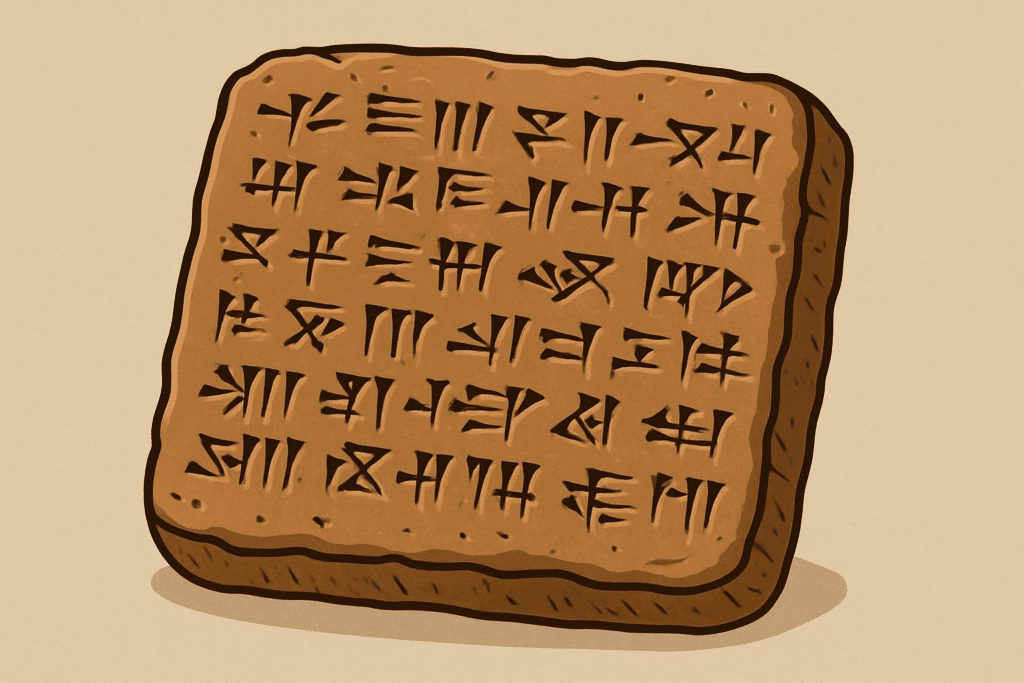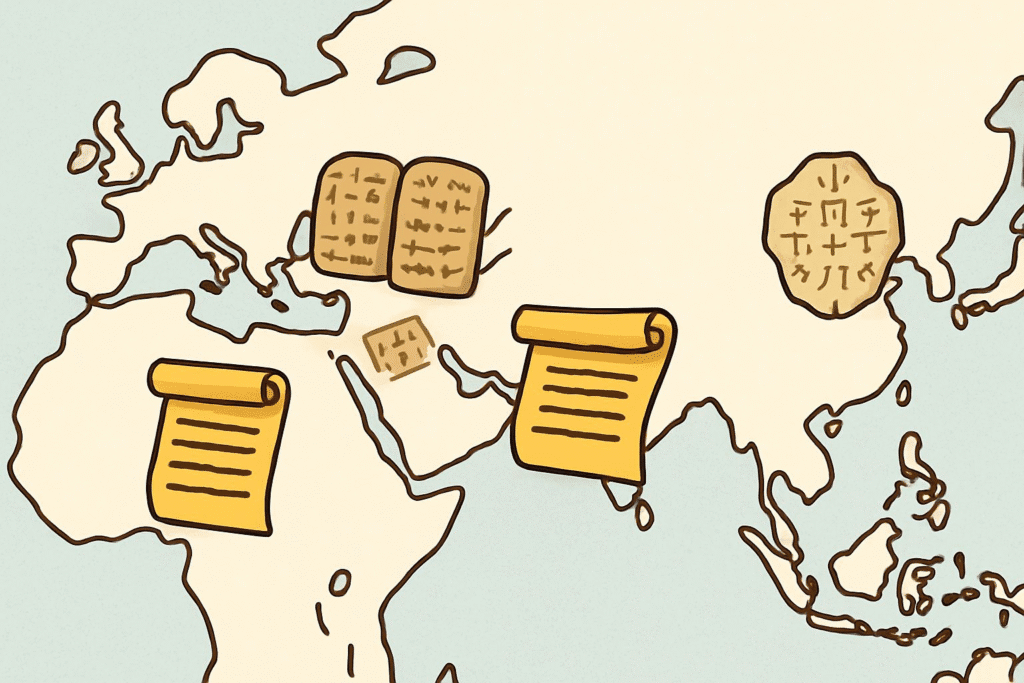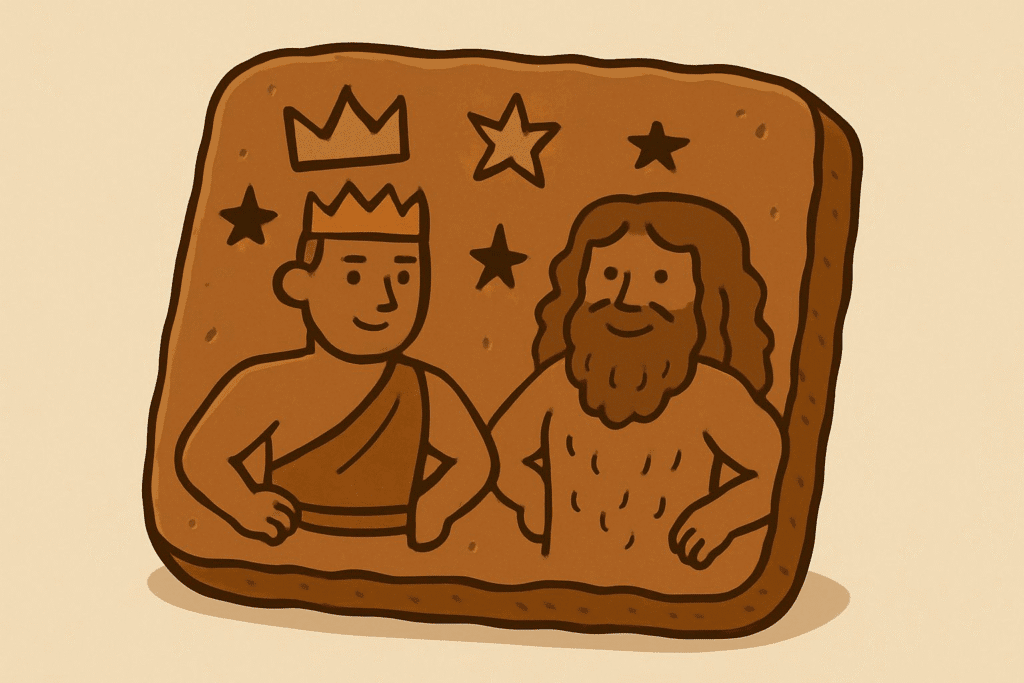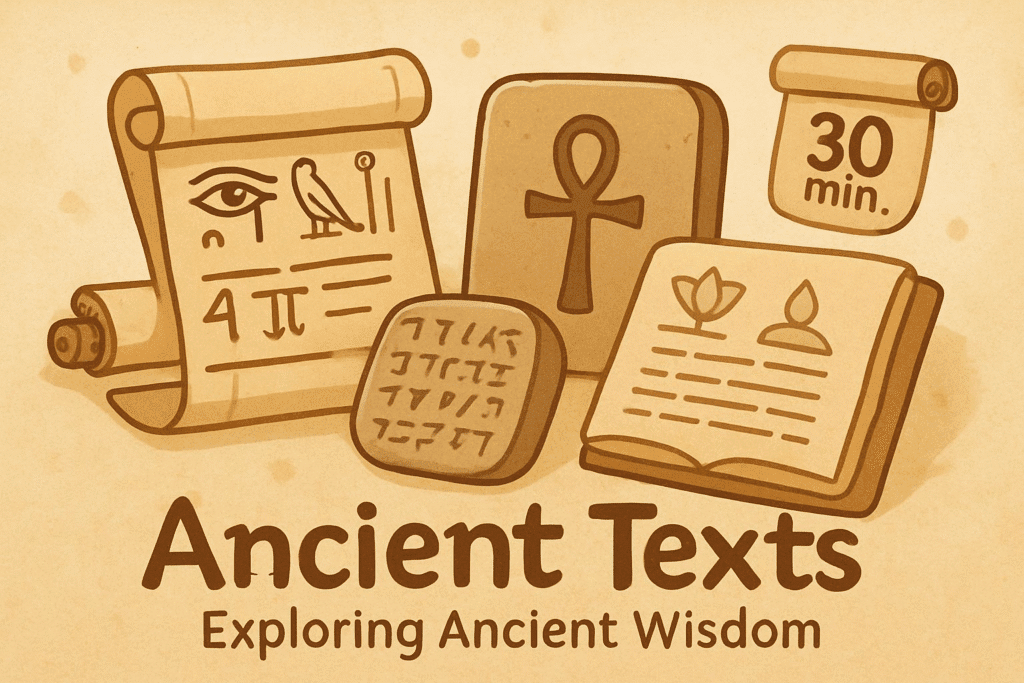Introduction

From the moment humanity etched symbols onto stone tablets, we began a journey of documenting our stories, knowledge, and imagination. But amidst this rich tapestry of recorded history, a fascinating question arises: what is the world’s first book? Is it a tale of adventure, a religious text, or an early attempt to pass down wisdom to future generations?
The idea of a “book” itself has evolved dramatically over time. What we now think of as books—bound pages nestled between covers—started as humble clay tablets, papyrus scrolls, and handwritten manuscripts. The pursuit of writing was not merely functional; it reflected humanity’s desire to preserve culture, share ideas, and communicate across generations.
This blog will take you on a journey through time to uncover the world’s first book. We’ll explore ancient writing systems, the earliest literary works, and how books have shaped civilizations throughout history. By diving into this fascinating topic, you’ll discover how the written word became one of the most powerful tools for preserving humanity’s legacy.
Defining the World’s First Book

The concept of a “book” has shifted significantly over time, making it challenging to identify the world’s first true book. To understand this, we need to consider how written communication evolved and how the definition of a book changed through history.
In ancient times, writing began as inscriptions on stone tablets and walls, primarily for administrative and religious purposes. While these writings captured knowledge, they weren’t what we would traditionally call books. The first step toward books as we know them came with the advent of portable writing surfaces, such as clay tablets, papyrus scrolls, and later, parchment and vellum.
A book, in the modern sense, typically refers to a collection of written, printed, or illustrated pages bound together. But in earlier times, a “book” could take the form of a scroll or even a series of carved tablets. For example, the Mesopotamian clay tablets that preserve The Epic of Gilgamesh are often considered the earliest “book” because they compile a cohesive narrative.
The definition of a book also involves its purpose. A true book transcends mere documentation to tell a story, share wisdom, or convey an enduring message. As humanity transitioned from oral traditions to written storytelling, texts like The Epic of Gilgamesh, The Kesh Temple Hymn, and early Egyptian writings laid the foundation for what we consider books today.
Identifying the world’s first book, therefore, depends on how we define it—by its format, purpose, or impact. What’s clear is that the journey from clay tablets to bound pages represents a monumental leap in preserving human thought and culture.
Early Writing Systems: Foundations of Literature

Before the advent of books as we know them, humanity relied on various writing systems to record and transmit information. These early forms of written communication were the stepping stones that paved the way for the creation of literary masterpieces and, ultimately, the concept of the book.
Cuneiform Tablets of Mesopotamia
One of the earliest known writing systems is cuneiform, developed by the Sumerians around 3100 BCE. Using a stylus to press wedge-shaped marks into clay tablets, they recorded everything from trade transactions to epic stories like The Epic of Gilgamesh. These clay tablets represent some of the first attempts to compile and preserve cohesive narratives.
Egyptian Hieroglyphs on Papyrus Scrolls
In ancient Egypt, writing evolved into hieroglyphs—an intricate system of pictorial symbols. Egyptians wrote on papyrus scrolls made from the fibers of the papyrus plant. These scrolls were used for religious texts, administrative records, and literary works like The Book of the Dead, a guide to the afterlife.
Chinese Oracle Bones and Scripts
Around 1200 BCE, the earliest Chinese writing emerged on oracle bones—animal bones or turtle shells used for divination. Later, writing systems evolved into intricate scripts recorded on bamboo strips, silk, and eventually paper. These early texts preserved philosophical teachings and historical records.
Indus Valley Script
The Indus Valley Civilization, flourishing around 2600 BCE, developed a unique script found on seals and pottery. Though not yet fully deciphered, this script suggests an early attempt at documenting information, potentially laying a foundation for future literary works.
These early writing systems demonstrate humanity’s ingenuity in preserving knowledge and storytelling. While they may not fit the modern definition of a book, they represent the cultural and intellectual groundwork necessary for books to emerge. Without these innovations, the world’s first literary works might never have been conceived.
The Epic of Gilgamesh: The World’s Oldest Literary Masterpiece

Among the many treasures of ancient literature, The Epic of Gilgamesh stands as the earliest surviving narrative that has been compiled and preserved as a cohesive literary work. Dating back to approximately 2100 BCE in ancient Mesopotamia, it is considered by many historians and scholars to be the world’s first book in the modern sense.
Origins and Storyline
Written in cuneiform on clay tablets, The Epic of Gilgamesh originates from the Sumerian city-state of Uruk. It recounts the adventures of King Gilgamesh, who is part god and part human. The narrative explores universal themes such as friendship, the search for meaning, and humanity’s struggle against mortality. Key moments include Gilgamesh’s friendship with the wild man Enkidu, their heroic feats, and Gilgamesh’s quest for immortality following Enkidu’s death.
Significance and Cultural Impact
The Epic of Gilgamesh not only offers a glimpse into the beliefs, values, and social structures of ancient Mesopotamia, but it also establishes archetypes that resonate in literature to this day. Themes of heroism, loss, and the quest for eternal life can be found in works spanning cultures and centuries.
Discovery and Preservation
The epic was rediscovered in the 19th century, when archaeologists unearthed clay tablets in the ruins of the ancient Assyrian library of King Ashurbanipal in Nineveh. The story’s survival is attributed to the durability of the clay tablets and the meticulous efforts of early scribes who documented it.
Enduring Legacy
Modern scholars view The Epic of Gilgamesh as a foundational text in world literature. It has inspired countless works, from poetry to novels, and remains a touchstone for understanding the roots of storytelling.
By preserving the hopes, fears, and dreams of ancient civilization, The Epic of Gilgamesh remains a timeless masterpiece that connects us to the very beginnings of literature.
Other Ancient Texts Worth Exploring

While The Epic of Gilgamesh is often hailed as the world’s first literary masterpiece, it is not the only ancient text that holds a significant place in the history of literature. Numerous early works, from various civilizations, showcase humanity’s early attempts to record wisdom, beliefs, and stories.
The Kesh Temple Hymn
Dating back to around 2600 BCE, The Kesh Temple Hymn is one of the oldest known examples of written literature. This Sumerian text is a hymn of praise dedicated to the Temple of Kesh and reflects the religious and cultural values of the time.
The Instructions of Shuruppak
Also originating from Sumer around 2600 BCE, The Instructions of Shuruppak is an early piece of wisdom literature. It consists of advice from a father to his son, offering timeless moral lessons that resonate across generations.
The Egyptian Book of the Dead
The Book of the Dead is a collection of funerary texts from ancient Egypt, written on papyrus scrolls. Dating back to around 1600 BCE, these texts were designed to guide the deceased through the afterlife, providing insight into Egyptian beliefs about life and death.
The Rigveda
Composed in ancient India around 1500 BCE, the Rigveda is one of the oldest religious texts in the world. Written in Sanskrit, it forms the foundation of Hindu philosophy, spirituality, and cultural practices.
The Enuma Elish
An ancient Babylonian creation myth, the Enuma Elish, dates back to around 1100 BCE. This epic poem describes the origins of the world and the rise of the god Marduk, offering a glimpse into Mesopotamian cosmology and religious practices.
Each of these texts, while unique in content and purpose, shares a common thread—they reflect humanity’s earliest attempts to explore fundamental questions about existence, morality, and the divine. Together, they form the foundation of the literary traditions we treasure today.
The Evolution of Books Through History

The concept of the book as we know it today has undergone remarkable changes throughout history. From stone tablets to digital e-books, the journey of books reflects humanity’s continuous innovation in preserving and sharing knowledge.
From Stone Tablets to Scrolls
The earliest written records, such as Mesopotamian cuneiform tablets and Egyptian hieroglyphs, were inscribed on clay, stone, and walls. While durable, these mediums were heavy and cumbersome. The invention of papyrus scrolls in ancient Egypt marked a significant leap in portability. Papyrus allowed for longer texts to be compiled and stored, revolutionizing record-keeping and storytelling.
The Codex: The Birth of the Modern Book
The codex, developed by the Romans around the first century CE, introduced bound pages made from parchment or vellum. Unlike scrolls, codices could be easily opened and closed, making them more durable and practical. This format quickly gained popularity, and many early religious texts, like the Bible, were produced as codices.
The Printing Revolution
The invention of the printing press by Johannes Gutenberg in the 15th century was a turning point in book history. Gutenberg’s movable type allowed for mass production of books, dramatically reducing costs and making literature accessible to the general public. The Gutenberg Bible became the first major book printed using this revolutionary technology.
Modern Publishing and Digital Transformation
The industrial revolution brought further advancements in book production, including affordable paperbacks and widespread publishing. In recent decades, digital books and e-readers like Kindle have transformed how readers access and consume literature. Audiobooks have also surged in popularity, bringing books to listeners on the go.
Books in the Digital Age
Today, books exist in physical, digital, and audio formats, reflecting the diversity of readers’ preferences. E-books, in particular, have enabled the global distribution of literature, allowing stories to reach audiences in even the most remote corners of the world.
From ancient clay tablets to the convenience of modern e-books, the evolution of books showcases humanity’s enduring commitment to knowledge, creativity, and connection.
The Cultural Significance of Books Over Time
Books have always been more than just collections of words—they are powerful symbols of civilization, progress, and identity. Throughout history, books have preserved knowledge, shaped ideologies, and connected societies.
Preservation of Knowledge
Books have long served as the primary medium for recording and transmitting knowledge. Ancient texts like The Epic of Gilgamesh or the Rigveda ensured that the ideas and wisdom of early civilizations were passed down to future generations. Without these written records, much of humanity’s history and achievements would have been lost to time.
Books as Tools for Education and Religion
From ancient scrolls to modern textbooks, books have always played a central role in education. They have been instrumental in teaching languages, sciences, and philosophies. Similarly, religious texts like the Bible, the Quran, and the Bhagavad Gita have shaped spiritual beliefs and practices for billions of people, offering guidance and moral frameworks.
Catalysts for Social Change
Certain books have sparked revolutions, challenged norms, and inspired movements. Works like Harriet Beecher Stowe’s Uncle Tom’s Cabin or Karl Marx’s The Communist Manifesto highlight how the written word can become a catalyst for social and political transformation.
A Reflection of Culture and Identity
Books often mirror the values, struggles, and triumphs of the societies in which they are created. Whether it’s the heroism depicted in epics like Beowulf or the magical realism of Latin American literature, books capture the essence of cultural identity, providing a window into the lives and perspectives of people across time and place.
A Universal Connector
Despite differences in language, format, or genre, books have the unique ability to connect readers across the world. They evoke empathy, spark curiosity, and foster a sense of shared humanity. The timeless appeal of stories ensures that books remain relevant, no matter how much society evolves.
As symbols of humanity’s collective achievements, books transcend their physical form. They are vessels of knowledge, emotion, and creativity, reminding us of our shared history and infinite potential.
Conclusion
The journey to uncover the world’s first book is not just a quest for historical facts—it’s an exploration of humanity’s enduring love for storytelling and knowledge. From clay tablets etched with cuneiform script to papyrus scrolls bearing hieroglyphs, early written works represent the ingenuity and creativity of ancient civilizations.
At the heart of this journey lies The Epic of Gilgamesh, the oldest surviving literary masterpiece. Its timeless themes of friendship, heroism, and mortality remind us of the shared human experiences that transcend generations. Yet, it is accompanied by other ancient texts that have shaped culture and history in unique ways.
The evolution of books from stone tablets to digital formats showcases the adaptability of the written word. Each step reflects humanity’s drive to preserve ideas and connect across time and space. Books have become more than tools of knowledge—they are symbols of identity, progress, and unity.
As we marvel at the origins of literature, we are reminded of the enduring power of the written word. Whether it’s ancient epics or modern novels, books continue to inspire, educate, and unite readers across the globe. Let this exploration spark curiosity and encourage us all to delve deeper into the rich history of books and storytelling.
FAQ’s
What is the oldest surviving book in the world?
The Epic of Gilgamesh holds the title of the oldest surviving literary work, dating back to around 2100 BCE. Preserved on Mesopotamian clay tablets, it tells a timeless story of friendship, heroism, and the search for immortality.
Is The Epic of Gilgamesh the oldest story, or the first book?
While The Epic of Gilgamesh is the oldest known written narrative, it’s important to distinguish between oral traditions and written records. Many ancient cultures passed down stories orally before they were compiled into written texts.
How were ancient books made and preserved?
Ancient books were created using materials like clay, papyrus, parchment, and vellum. Clay tablets were baked to increase durability, while papyrus scrolls were carefully rolled and stored. Preservation was aided by dry climates and meticulous documentation by scribes.
What is the oldest printed book?
The oldest printed book is often considered to be the Chinese Diamond Sutra, created in 868 CE using woodblock printing techniques. In Europe, the Gutenberg Bible (printed in the 15th century) marked the beginning of mass book production.
How has the definition of a book changed over time?
Books have evolved from stone tablets and scrolls to codices and printed texts. Today, digital formats like e-books and audiobooks reflect the ongoing transformation of how we define and experience books
